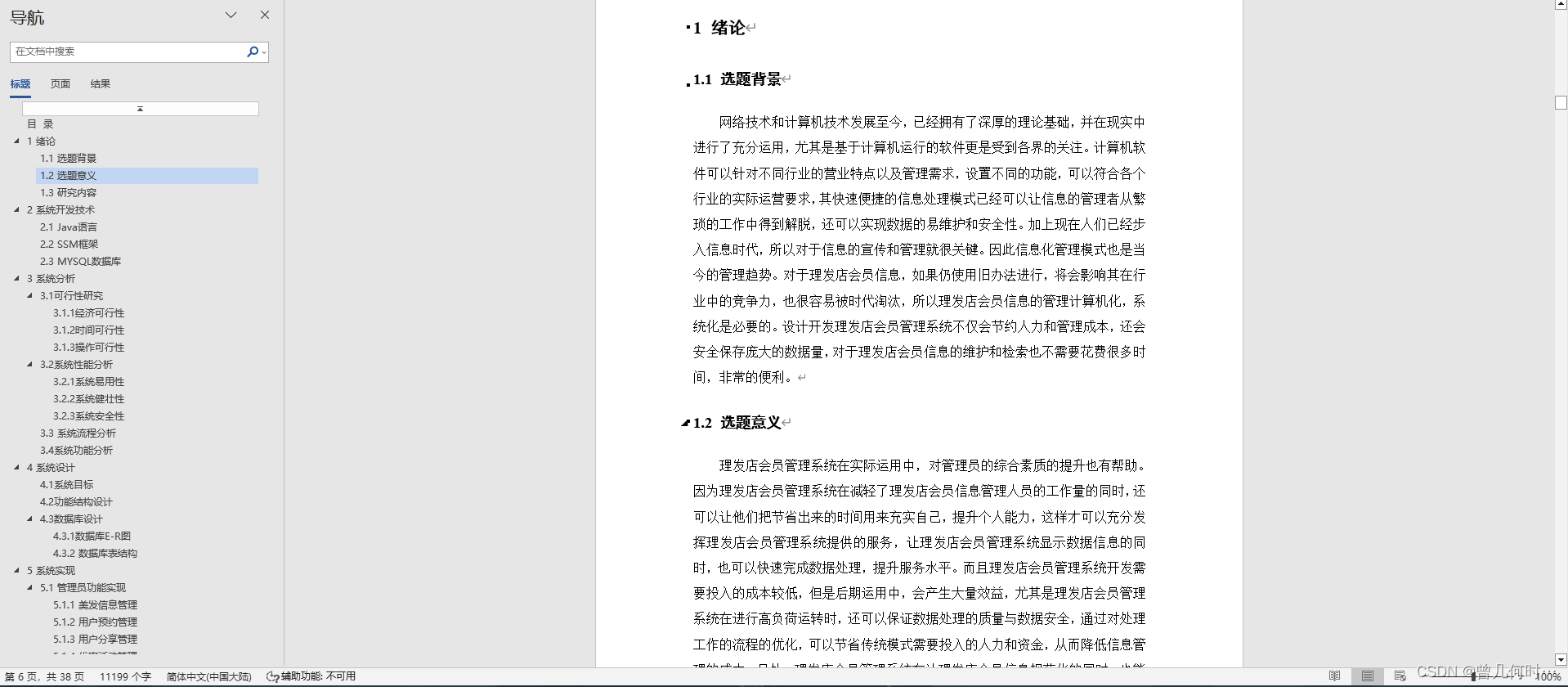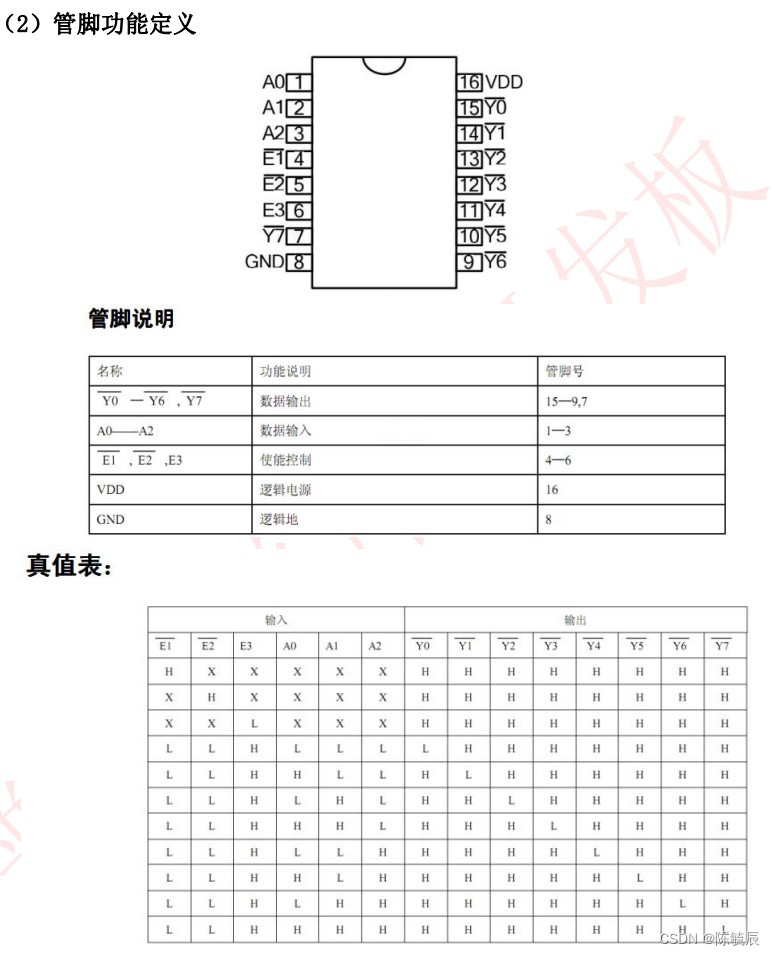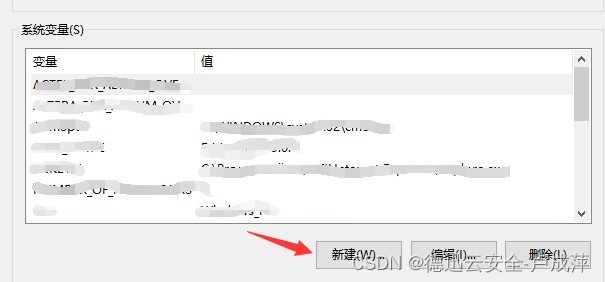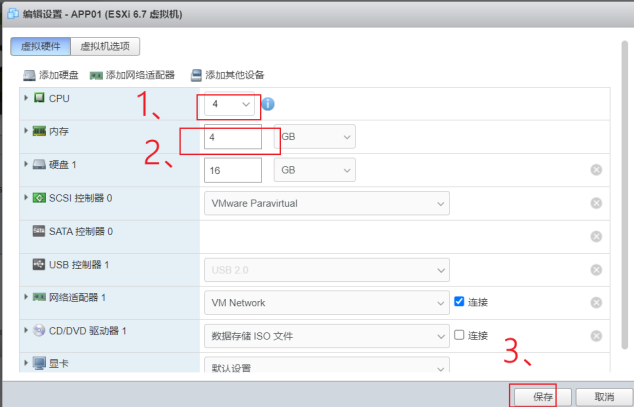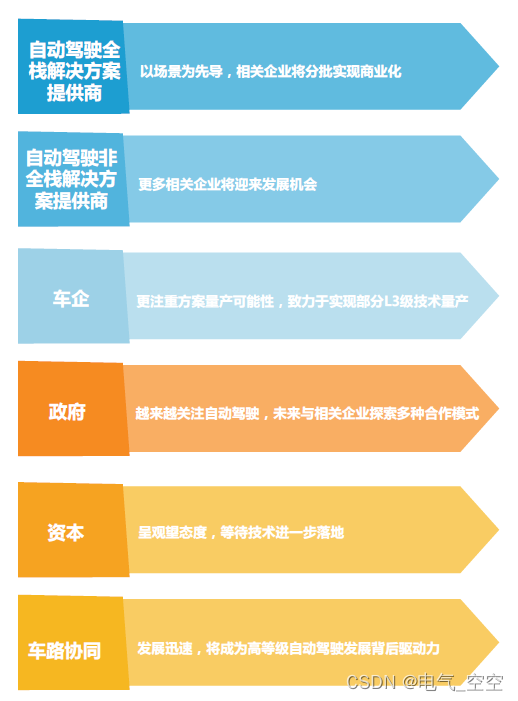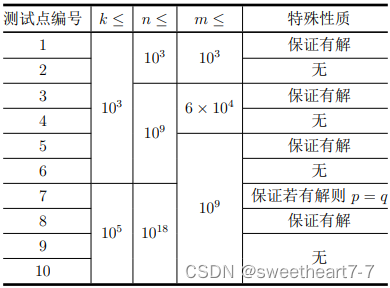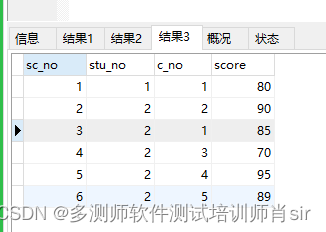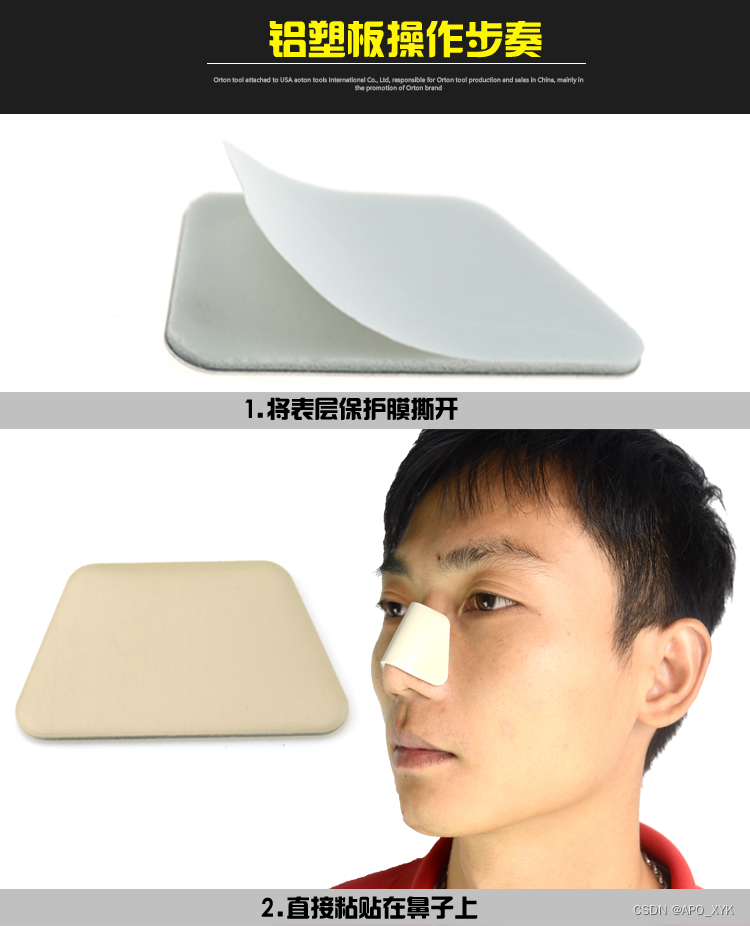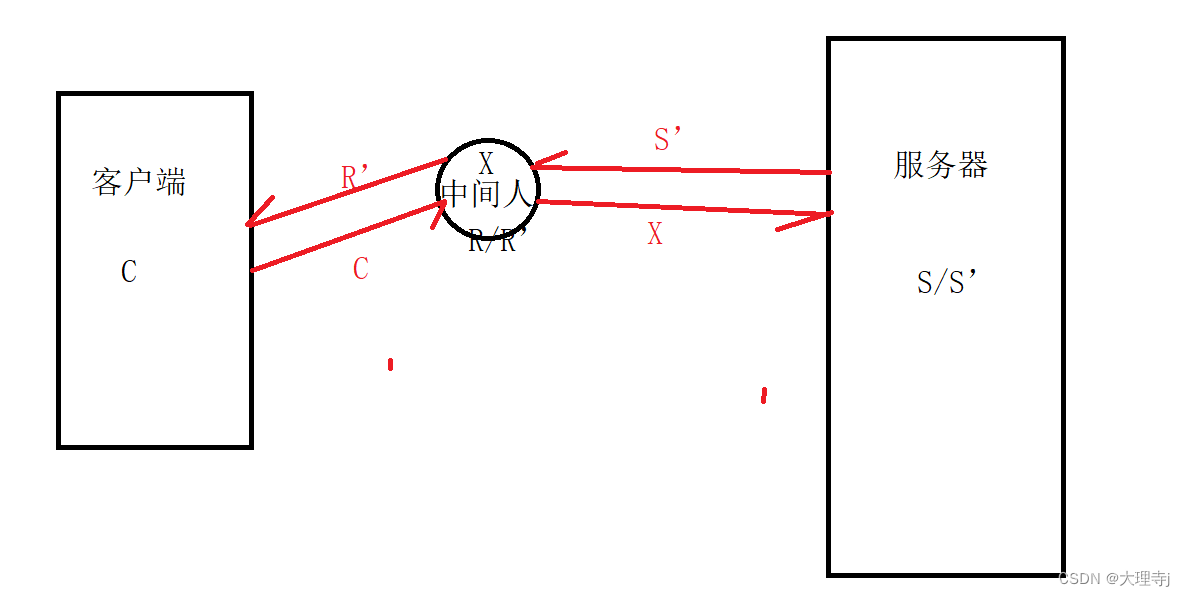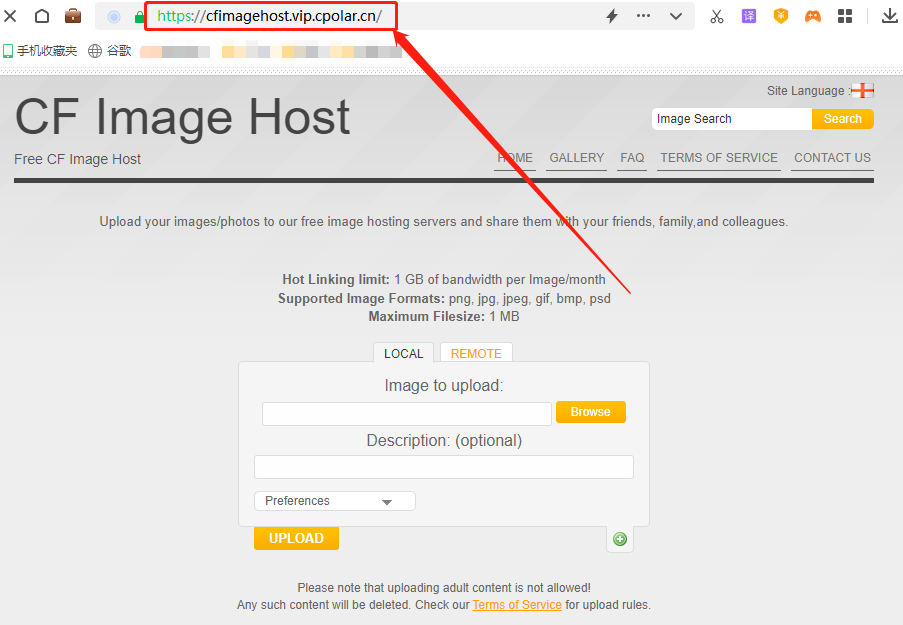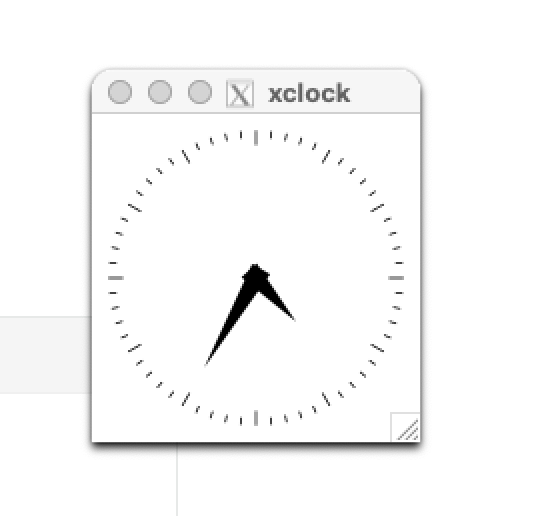末尾获取源码
开发语言:Java
Java开发工具:JDK1.8
后端框架:SSM
前端:采用JSP技术开发
数据库:MySQL5.7和Navicat管理工具结合
服务器:Tomcat8.5
开发软件:IDEA / Eclipse
是否Maven项目:是
目录
一、项目简介
二、系统设计
系统目标
功能结构设计
三、系统项目截图
美发信息管理
用户预约管理
用户分享管理
优惠活动管理
商铺信息
美发信息
用户分享
优惠活动
四、核心代码
4.1登录相关
4.2文件上传
4.3封装
五、论文目录与截图
一、项目简介
网络技术和计算机技术发展至今,已经拥有了深厚的理论基础,并在现实中进行了充分运用,尤其是基于计算机运行的软件更是受到各界的关注。加上现在人们已经步入信息时代,所以对于信息的宣传和管理就很关键。因此理发店会员信息的管理计算机化,系统化是必要的。设计开发理发店会员管理系统不仅会节约人力和管理成本,还会安全保存庞大的数据量,对于理发店会员信息的维护和检索也不需要花费很多时间,非常的便利。
理发店会员管理系统是在MySQL中建立数据表保存信息,运用SSM框架和Java语言编写。并按照软件设计开发流程进行设计实现。系统具备友好性且功能完善。系统实现的功能包括商铺管理,美发管理,用户预约管理,用户分享管理,留言管理等功能。
理发店会员管理系统在让理发店会员信息规范化的同时,也能及时通过数据输入的有效性规则检测出错误数据,让数据的录入达到准确性的目的,进而提升理发店会员管理系统提供的数据的可靠性,让系统数据的错误率降至最低。
二、系统设计
当前,系统的类型有很多,从系统呈现的内容来看,系统的类型有社交类,有商业类,有政府类,有新闻类等。那么,在众多系统类型中,先明确将要设计的系统的类型才是系统设计的首要工作,然后在此基础上明确系统的用户群,功能等,针对这些信息设计出具有独特体验和视觉的系统。如此才能让系统比较具有特色,也能够在众多相似系统中给用户留下深刻印象。
系统目标
本系统在功能制定上,严格参照用户的要求,但是在设计本系统时,也要满足易操作,使用便利的设计要求。由此,设计出一个规范化并且符合用户需求的系统,一定要达到下述系统目标。
第一个系统目标:用户与系统之间的操作方式是基于人机对话,可视化界面的设计除了美观性之外,也具备友好性。可视化界面提供的各类信息符合准确性,可靠性的要求,并能够方便用户灵活查看。
第二个系统目标:用户与系统交互产生的数据,要严格规范的保存在数据库里,无论是后期管理人员查找与管理,都要确保数据安全。
第三个系统目标:实现用户需求的功能。根据对用户的调查得出的功能需求,完成理发店会员管理系统的设计与实现。
第四个系统目标:在必要环节,对用户登记的数据进行检查,包括数据长度,以及数据输入类型等的检查,发现错误及时反馈,引导用户规范登记数据。常见的有密码修改,注册登录,用户资料填写等环节的数据核验。
第五个系统目标:设计开发本系统,需要尽最大努力,在系统具备易操作的特点外,也要求系统于后期使用中,维护方便,让系统具备易维护的特点。
第六个系统目标:本系统在交付用户使用时,可以达到运行稳定的目标,另外,系统具备安全性,也符合可靠性的条件,用户可以放心使用。
功能结构设计
前面所做的功能分析,只是本系统的一个大概功能,这部分需要在此基础上进行各个模块的详细设计。
设计的管理员的详细功能见下图,管理员登录进入本人后台之后,管理美发,商铺,优惠活动,用户分享信息,审核用户预约的美发信息。
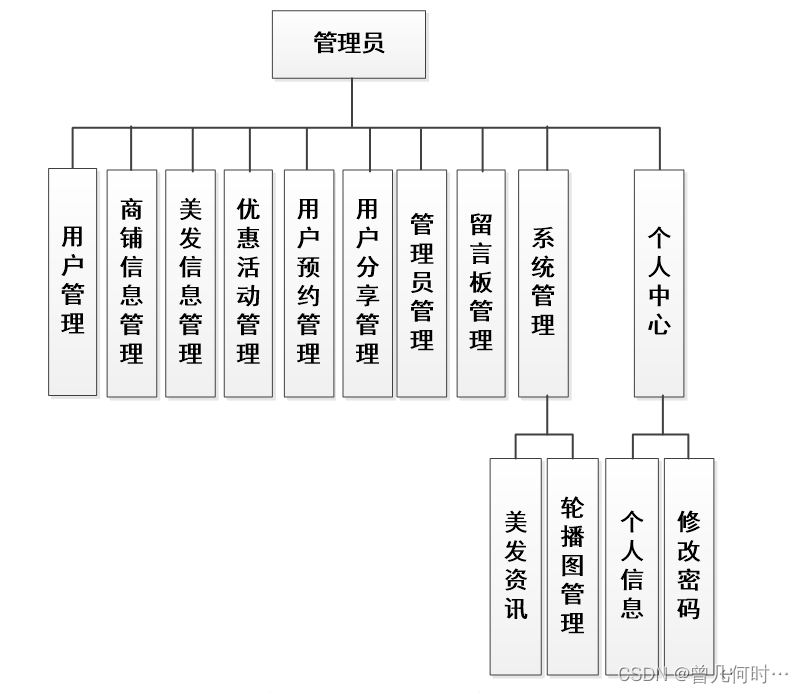
设计的用户的详细功能见下图,用户预约美发,查看并评论商铺,优惠活动以及用户分享信息。

三、系统项目截图
美发信息管理
管理员权限中的美发信息管理,其运行效果见下图。管理员查看美发相关评论,修改美发信息,查询美发信息。
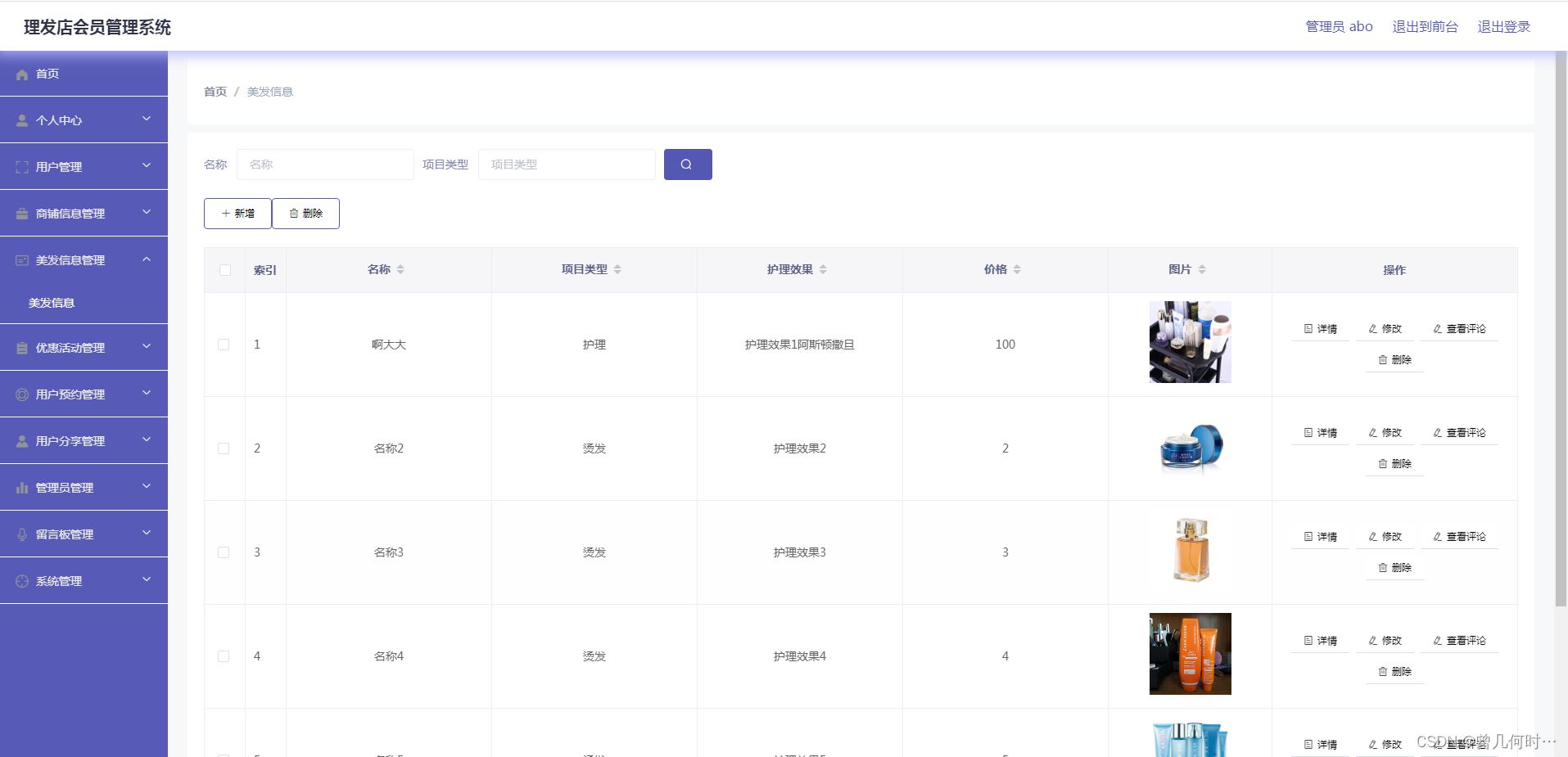
用户预约管理
管理员权限中的用户预约管理,其运行效果见下图。管理员需要审核用户预约的美发,查看用户是否完成支付。
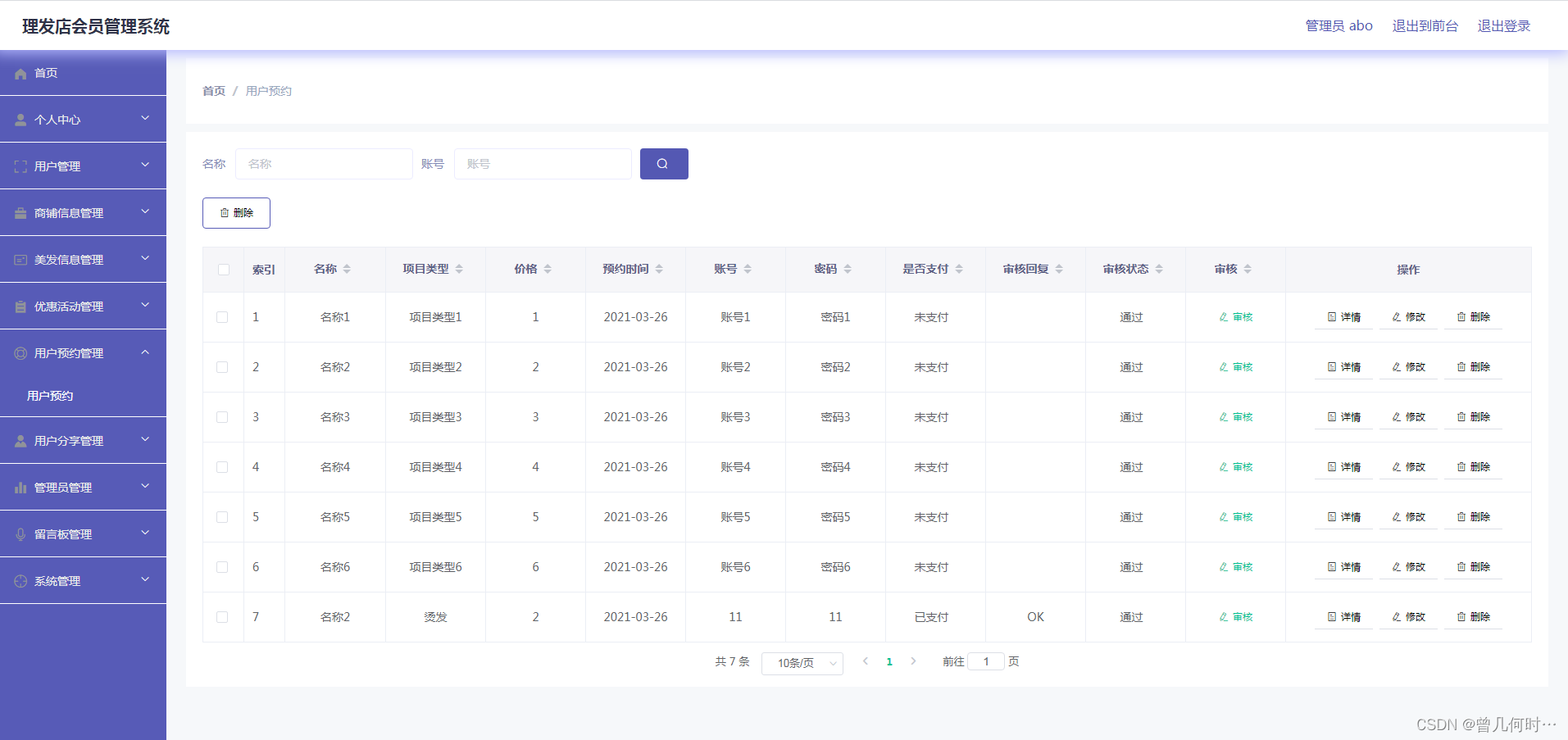
用户分享管理
管理员权限中的用户分享管理,其运行效果见下图。管理员查看用户分享的信息,查询,修改用户的分享信息。
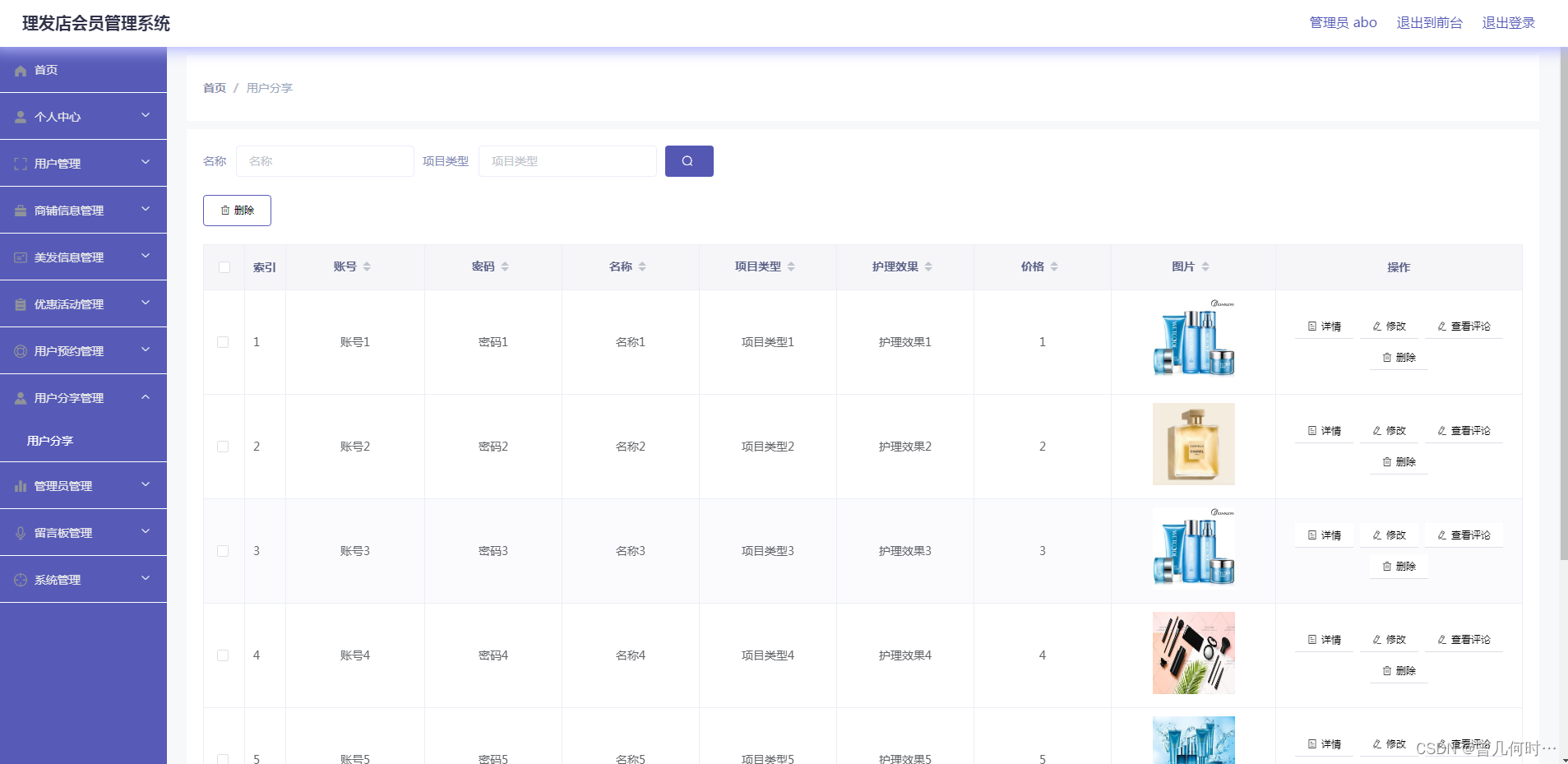
优惠活动管理
管理员权限中的优惠活动管理,其运行效果见下图。管理员修改优惠活动信息,查看用户评论优惠活动的信息,删除指定的优惠活动信息。
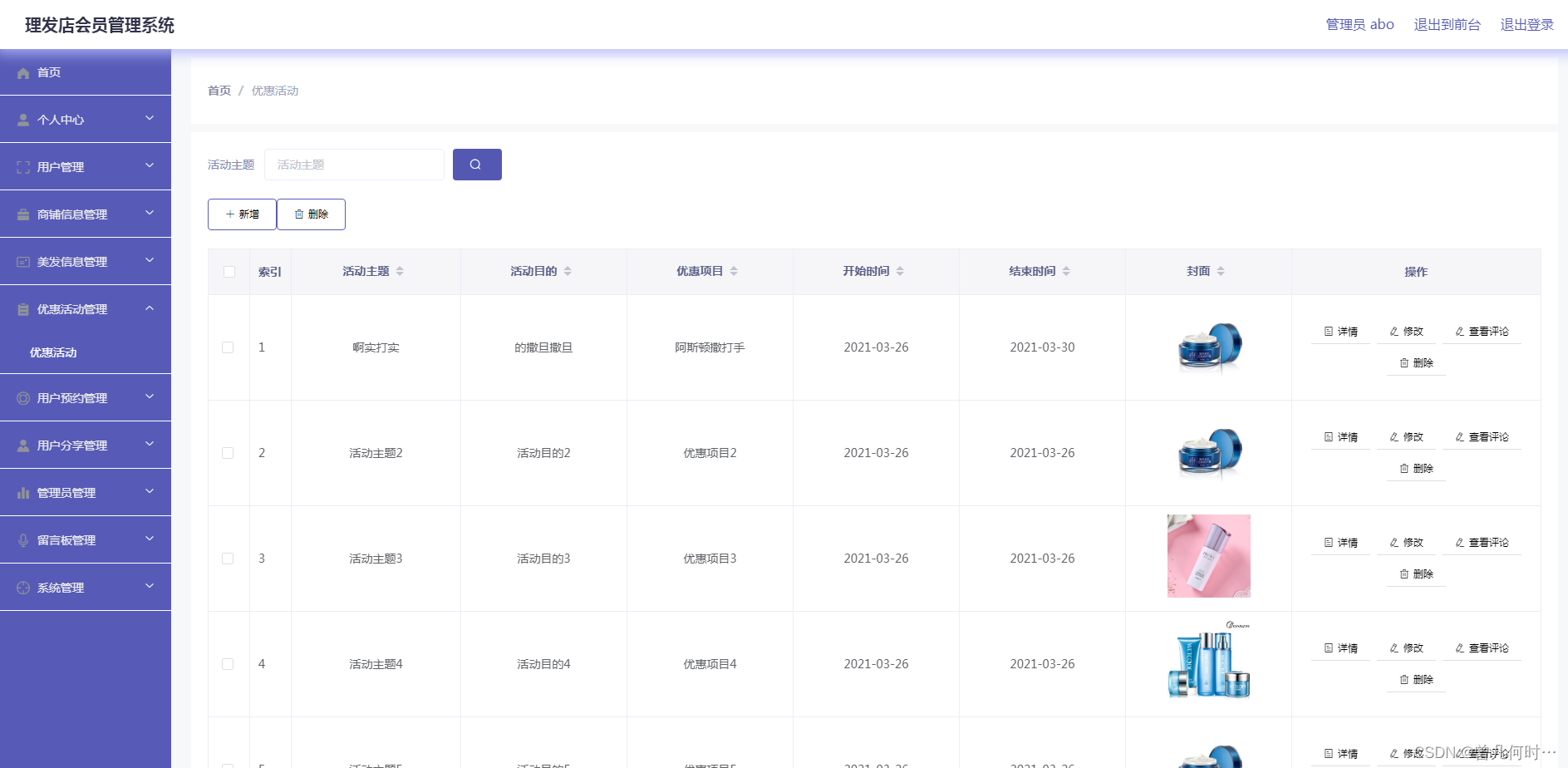
商铺信息
用户权限中的商铺信息,其运行效果见下图。用户查看商铺介绍,评论商铺。

美发信息
用户权限中的美发信息,其运行效果见下图。用户收藏美发信息,评论美发信息,预约美发。

用户分享
用户权限中的用户分享,其运行效果见下图。用户查看别人发布的分享信息,可以收藏分享信息,评论分享信息。
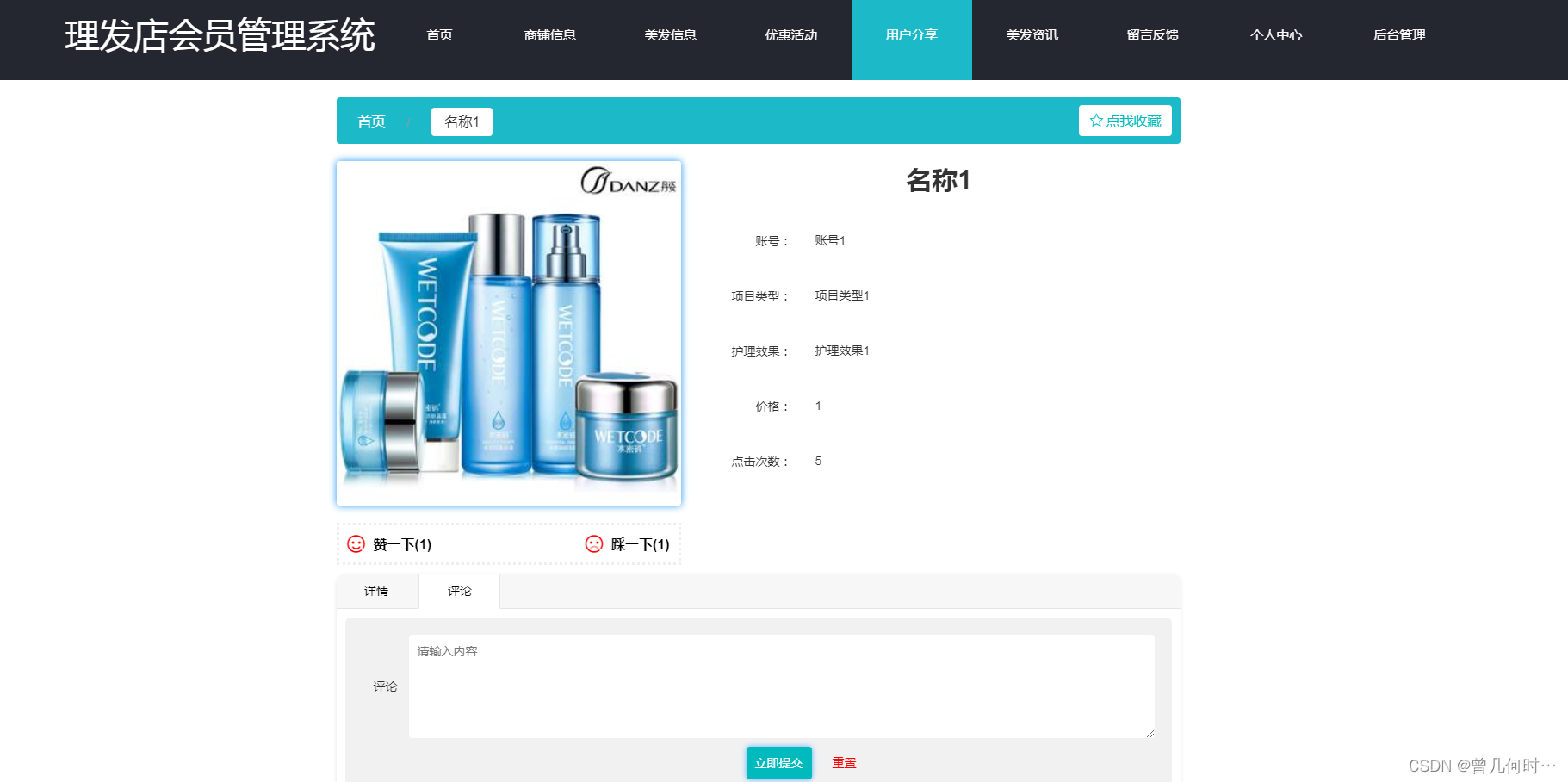
优惠活动
用户权限中的优惠活动,其运行效果见下图。用户查看优惠活动详细信息,评论优惠活动。
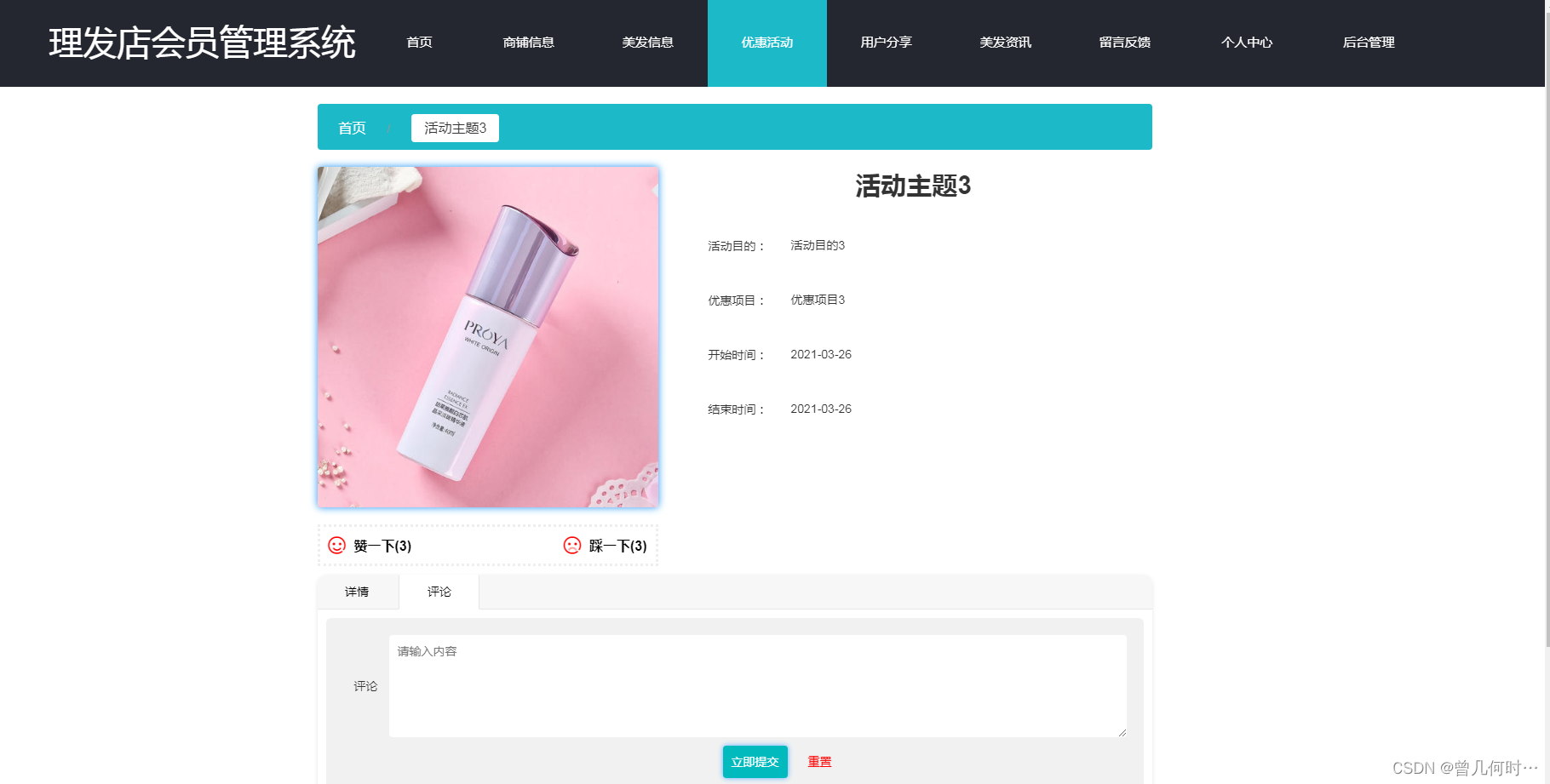
四、核心代码
4.1登录相关
package com.controller;
import java.util.Arrays;
import java.util.Calendar;
import java.util.Date;
import java.util.Map;
import javax.servlet.http.HttpServletRequest;
import org.springframework.beans.factory.annotation.Autowired;
import org.springframework.stereotype.Controller;
import org.springframework.web.bind.annotation.GetMapping;
import org.springframework.web.bind.annotation.PathVariable;
import org.springframework.web.bind.annotation.PostMapping;
import org.springframework.web.bind.annotation.RequestBody;
import org.springframework.web.bind.annotation.RequestMapping;
import org.springframework.web.bind.annotation.RequestParam;
import org.springframework.web.bind.annotation.ResponseBody;
import org.springframework.web.bind.annotation.RestController;
import com.annotation.IgnoreAuth;
import com.baomidou.mybatisplus.mapper.EntityWrapper;
import com.entity.TokenEntity;
import com.entity.UserEntity;
import com.service.TokenService;
import com.service.UserService;
import com.utils.CommonUtil;
import com.utils.MD5Util;
import com.utils.MPUtil;
import com.utils.PageUtils;
import com.utils.R;
import com.utils.ValidatorUtils;
/**
* 登录相关
*/
@RequestMapping("users")
@RestController
public class UserController{
@Autowired
private UserService userService;
@Autowired
private TokenService tokenService;
/**
* 登录
*/
@IgnoreAuth
@PostMapping(value = "/login")
public R login(String username, String password, String captcha, HttpServletRequest request) {
UserEntity user = userService.selectOne(new EntityWrapper<UserEntity>().eq("username", username));
if(user==null || !user.getPassword().equals(password)) {
return R.error("账号或密码不正确");
}
String token = tokenService.generateToken(user.getId(),username, "users", user.getRole());
return R.ok().put("token", token);
}
/**
* 注册
*/
@IgnoreAuth
@PostMapping(value = "/register")
public R register(@RequestBody UserEntity user){
// ValidatorUtils.validateEntity(user);
if(userService.selectOne(new EntityWrapper<UserEntity>().eq("username", user.getUsername())) !=null) {
return R.error("用户已存在");
}
userService.insert(user);
return R.ok();
}
/**
* 退出
*/
@GetMapping(value = "logout")
public R logout(HttpServletRequest request) {
request.getSession().invalidate();
return R.ok("退出成功");
}
/**
* 密码重置
*/
@IgnoreAuth
@RequestMapping(value = "/resetPass")
public R resetPass(String username, HttpServletRequest request){
UserEntity user = userService.selectOne(new EntityWrapper<UserEntity>().eq("username", username));
if(user==null) {
return R.error("账号不存在");
}
user.setPassword("123456");
userService.update(user,null);
return R.ok("密码已重置为:123456");
}
/**
* 列表
*/
@RequestMapping("/page")
public R page(@RequestParam Map<String, Object> params,UserEntity user){
EntityWrapper<UserEntity> ew = new EntityWrapper<UserEntity>();
PageUtils page = userService.queryPage(params, MPUtil.sort(MPUtil.between(MPUtil.allLike(ew, user), params), params));
return R.ok().put("data", page);
}
/**
* 列表
*/
@RequestMapping("/list")
public R list( UserEntity user){
EntityWrapper<UserEntity> ew = new EntityWrapper<UserEntity>();
ew.allEq(MPUtil.allEQMapPre( user, "user"));
return R.ok().put("data", userService.selectListView(ew));
}
/**
* 信息
*/
@RequestMapping("/info/{id}")
public R info(@PathVariable("id") String id){
UserEntity user = userService.selectById(id);
return R.ok().put("data", user);
}
/**
* 获取用户的session用户信息
*/
@RequestMapping("/session")
public R getCurrUser(HttpServletRequest request){
Long id = (Long)request.getSession().getAttribute("userId");
UserEntity user = userService.selectById(id);
return R.ok().put("data", user);
}
/**
* 保存
*/
@PostMapping("/save")
public R save(@RequestBody UserEntity user){
// ValidatorUtils.validateEntity(user);
if(userService.selectOne(new EntityWrapper<UserEntity>().eq("username", user.getUsername())) !=null) {
return R.error("用户已存在");
}
userService.insert(user);
return R.ok();
}
/**
* 修改
*/
@RequestMapping("/update")
public R update(@RequestBody UserEntity user){
// ValidatorUtils.validateEntity(user);
userService.updateById(user);//全部更新
return R.ok();
}
/**
* 删除
*/
@RequestMapping("/delete")
public R delete(@RequestBody Long[] ids){
userService.deleteBatchIds(Arrays.asList(ids));
return R.ok();
}
}
4.2文件上传
package com.controller;
import java.io.File;
import java.io.FileNotFoundException;
import java.io.IOException;
import java.util.Arrays;
import java.util.Date;
import java.util.HashMap;
import java.util.List;
import java.util.Map;
import java.util.Random;
import java.util.UUID;
import org.apache.commons.io.FileUtils;
import org.apache.commons.lang3.StringUtils;
import org.springframework.beans.factory.annotation.Autowired;
import org.springframework.http.HttpHeaders;
import org.springframework.http.HttpStatus;
import org.springframework.http.MediaType;
import org.springframework.http.ResponseEntity;
import org.springframework.util.ResourceUtils;
import org.springframework.web.bind.annotation.PathVariable;
import org.springframework.web.bind.annotation.RequestBody;
import org.springframework.web.bind.annotation.RequestMapping;
import org.springframework.web.bind.annotation.RequestParam;
import org.springframework.web.bind.annotation.RestController;
import org.springframework.web.multipart.MultipartFile;
import com.annotation.IgnoreAuth;
import com.baomidou.mybatisplus.mapper.EntityWrapper;
import com.entity.ConfigEntity;
import com.entity.EIException;
import com.service.ConfigService;
import com.utils.R;
/**
* 上传文件映射表
*/
@RestController
@RequestMapping("file")
@SuppressWarnings({"unchecked","rawtypes"})
public class FileController{
@Autowired
private ConfigService configService;
/**
* 上传文件
*/
@RequestMapping("/upload")
public R upload(@RequestParam("file") MultipartFile file,String type) throws Exception {
if (file.isEmpty()) {
throw new EIException("上传文件不能为空");
}
String fileExt = file.getOriginalFilename().substring(file.getOriginalFilename().lastIndexOf(".")+1);
File path = new File(ResourceUtils.getURL("classpath:static").getPath());
if(!path.exists()) {
path = new File("");
}
File upload = new File(path.getAbsolutePath(),"/upload/");
if(!upload.exists()) {
upload.mkdirs();
}
String fileName = new Date().getTime()+"."+fileExt;
File dest = new File(upload.getAbsolutePath()+"/"+fileName);
file.transferTo(dest);
FileUtils.copyFile(dest, new File("C:\\Users\\Desktop\\jiadian\\springbootl7own\\src\\main\\resources\\static\\upload"+"/"+fileName));
if(StringUtils.isNotBlank(type) && type.equals("1")) {
ConfigEntity configEntity = configService.selectOne(new EntityWrapper<ConfigEntity>().eq("name", "faceFile"));
if(configEntity==null) {
configEntity = new ConfigEntity();
configEntity.setName("faceFile");
configEntity.setValue(fileName);
} else {
configEntity.setValue(fileName);
}
configService.insertOrUpdate(configEntity);
}
return R.ok().put("file", fileName);
}
/**
* 下载文件
*/
@IgnoreAuth
@RequestMapping("/download")
public ResponseEntity<byte[]> download(@RequestParam String fileName) {
try {
File path = new File(ResourceUtils.getURL("classpath:static").getPath());
if(!path.exists()) {
path = new File("");
}
File upload = new File(path.getAbsolutePath(),"/upload/");
if(!upload.exists()) {
upload.mkdirs();
}
File file = new File(upload.getAbsolutePath()+"/"+fileName);
if(file.exists()){
/*if(!fileService.canRead(file, SessionManager.getSessionUser())){
getResponse().sendError(403);
}*/
HttpHeaders headers = new HttpHeaders();
headers.setContentType(MediaType.APPLICATION_OCTET_STREAM);
headers.setContentDispositionFormData("attachment", fileName);
return new ResponseEntity<byte[]>(FileUtils.readFileToByteArray(file),headers, HttpStatus.CREATED);
}
} catch (IOException e) {
e.printStackTrace();
}
return new ResponseEntity<byte[]>(HttpStatus.INTERNAL_SERVER_ERROR);
}
}
4.3封装
package com.utils;
import java.util.HashMap;
import java.util.Map;
/**
* 返回数据
*/
public class R extends HashMap<String, Object> {
private static final long serialVersionUID = 1L;
public R() {
put("code", 0);
}
public static R error() {
return error(500, "未知异常,请联系管理员");
}
public static R error(String msg) {
return error(500, msg);
}
public static R error(int code, String msg) {
R r = new R();
r.put("code", code);
r.put("msg", msg);
return r;
}
public static R ok(String msg) {
R r = new R();
r.put("msg", msg);
return r;
}
public static R ok(Map<String, Object> map) {
R r = new R();
r.putAll(map);
return r;
}
public static R ok() {
return new R();
}
public R put(String key, Object value) {
super.put(key, value);
return this;
}
}
五、论文目录与截图
1 绪论........................................... 1
1.1 选题背景......................................................................................................... 1
1.2 选题意义......................................................................................................... 1
1.3 研究内容......................................................................................................... 2
2 系统开发技术.................................... 3
2.1 Java语言......................................................................................................... 3
2.2 SSM框架......................................................................................................... 3
2.3 MYSQL数据库............................................................................................... 4
3 系统分析....................................... 5
3.1可行性研究...................................................................................................... 5
3.1.1经济可行性........................................................................................... 5
3.1.2时间可行性........................................................................................... 5
3.1.3操作可行性........................................................................................... 5
3.2系统性能分析.................................................................................................. 6
3.2.1系统易用性........................................................................................... 6
3.2.2系统健壮性........................................................................................... 6
3.2.3系统安全性........................................................................................... 6
3.3 系统流程分析................................................................................................. 6
3.4系统功能分析.................................................................................................. 9
4 系统设计...................................... 12
4.1系统目标........................................................................................................ 12
4.2功能结构设计................................................................................................ 13
4.3数据库设计.................................................................................................... 14
4.3.1数据库E-R图.................................................................................... 14
4.3.2 数据库表结构.................................................................................... 17
5 系统实现...................................... 23
5.1 管理员功能实现........................................................................................... 23
5.1.1 美发信息管理.................................................................................... 23
5.1.2 用户预约管理.................................................................................... 23
5.1.3 用户分享管理.................................................................................... 24
5.1.4 优惠活动管理.................................................................................... 24
5.2 用户功能实现............................................................................................... 25
5.2.1 商铺信息............................................................................................ 25
5.2.2 美发信息............................................................................................ 25
5.2.3 用户分享............................................................................................ 26
5.2.4 优惠活动............................................................................................ 26
6系统测试....................................... 28
6.1 系统测试的类型........................................................................................... 28
6.2 功能测试....................................................................................................... 29
6.3 可用性测试................................................................................................... 29
6.4 测试结果分析............................................................................................... 29
结 论.......................................... 30
参考文献........................................ 32
致 谢.......................................... 33
